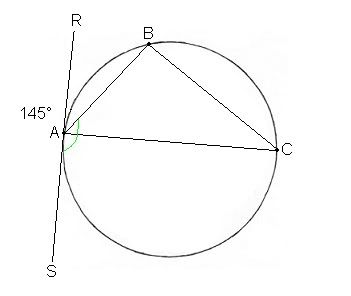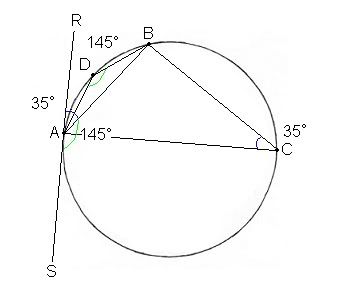His story is spellbinding. There's a really important message for you in the last two minutes ... but you won't really understand it unless you watch the whole thing.
Click on the picture. (18 min. 48 sec.)

An interactive learning ecology for students and parents in my Pre-Cal 30S class. This ongoing dialogue is as rich as YOU make it. Visit often and post your comments freely.



Watch how he displays and talks about statistics. He'll make you laugh and he'll make you think.
Thanks to everyone who helped put this together. I found this to be a great experience for me as a teacher I hope it was also valuable to you as a student.
Anyway, here it is, version 1.0 fresh out of beta. ;-)
Flickr Assignment Rubric
It is paramount that the picture be in tune with the purpose of the assignment. It should show, first of all, the student's understanding of how the photo is related to mathematics. The hot spots are important too, because that's essentially your way of teaching other people. Creativity is a factor, because keeping one's interest in the photo contributes to the learning process. Finally, the picture quality should be kept in mind too. If we can't see the picture, it's going to be hard achieving all the other requirements.
Tags
The picture must be tagged properly with the course tag and assignment tag. If tags are misspelled or no tags are present the photo cannot be graded and will receive a grade of ZERO. Not tagging your photo properly and accurately is analogous to not handing in your work or not putting your name on it.
| Classification | Mathematical Content (50%) | Hot Spots (35%) | Photograph (15%) |
| Level 4 | Packed with mathematical concepts/facts. (Minimum 7 concepts/facts.) | All hot spots accessible; i.e. "smaller" hot spots are "on top" of larger ones, they do not obscure each other. All hot spots are actually labels and relate to parts of the photo (not on blank space with filled in notes). One or more hot spots include a link to a relevant supporting resource on the internet. Minimum 7 hot spots. | In focus or appropriately focused for effect. The subject of the picture occurs "naturally," it is not a contrived shot. Really makes the viewer "see" math in a place they hadn't realized it existed. (Example: trigonometry) |
| Level 3 | Significant number of concepts/facts included. (Minimum 5 concepts/facts.) | All hot spots accessible. Most hot spots are actually labels and relate to parts of the photo. Not more than one hot spot on blank space. One or more hot spots may include a link to a relevant supporting resource on the internet. Minimum 5 hot spots. | In focus or appropriately focused for effect. The subject of the photo has been "set up" or contrived yet still illustrates math found in "the real world." (Example: derivative) |
| Level 2 | Some effort to include content evident. (Minimum 3 concepts/facts.) | Most hot spots accessible. Most hot spots are actually labels and relate to parts of the photo. More than one hot spot is on "blank" space. May or may not include links to relevant supporting resource on the internet. Minimum 3 hot spots. | In focus or appropriately focused for effect. Although it is a "real world" picture, objects have been used to "draw" the math. An obviously contrived shot. (Example: trigonometry) |
| Level 1 | Very scarce content related to assignment. | Less than three hot spots are visible or have information related to the theme of the assignment. | It is evident that little effort went into finding and shooting a picture that reflects the theme of the assignment. |
| Level 0 | Content unrelated to theme of assignment. | No hot spots or mostly unrelated to the theme of the assignment. | Out of focus and/or otherwise difficult to look at. |
Creativity (up to 5% bonus)
The maximum possible mark for this assignment is 105%. You can earn up to 5% bonus marks for being creative in the way you approach this assignment. This is not a rigidly defined category and is open to interpretation. You can earn this bonus if your work can be described in one or more of these ways:

Here are a few examples of some arguments:

AN EXAMPLE OF A FALSE ARGUMENT:
"All men are mortal.
Mr. K is a man
... Mr. K wears glasses."
That was a false statement because, even if the three statements alone are true, together as an argument, it's not. The conclusion doesn't flow naturally with the premises, and it doesn't make sense.
We also discussed different TYPES OF REASONING that we go over in this unit of Logic:
Induction: When we observe several particular examples that identify a pattern and conjecture that it must always be that case.
EXAMPLES:
QUESTION: Will the sun rise tomorrow?
ANSWER: It has every day before, so it will rise again tomorrow.
*That's the answer because through all the years we've been living, a reoccurring pattern of the sunrise has always taken place.
NOTE: To view more examples of inductive reasoning, look over all the investigations we worked on in our circle geometry unit!
Deduction: When we argue from basic, unarguable truths, to a valid conclusion.
An example of deductive reasoning is the process of proving THALES' THEOREM.

***************************************
In logic, we also look at relationships between different sets, and compare them in Venn Diagrams.
In the following images, we see how sets are made, and how we can compare two different sets using a venn diagram.


***************************************
Weeell ..
TOMORROW'S THE DAY! CIRCLE GEOMETRY UNIT TEST
I HOPE YOU GUYS ENJOYED MY SCRIBE..
blogger was being a pain in the behind and erased my
first draft and I had to start all over again!
BUT, I DID IT AGAIN. YET ANOTHER SCRIBE POST BY ME!
TOMORROW'S SCRIBE WILL BE ...
M@RK.
(just cuz he told me to pick him!)
NiGHT!!
 We're gearing up for our test tomorrow. Here's a bunch of online quizzes you can use to help get ready.
We're gearing up for our test tomorrow. Here's a bunch of online quizzes you can use to help get ready.
- Proof of Congruence (5 questions - refresh the page for more quizzes)
- More Congruence (5 questions - refresh the page for more quizzes)
- Circles (5 questions - refresh the page for more quizzes)
- Arcs &Angles (5 questions - refresh the page for more quizzes)
- Arcs & Chords (5 questions - refresh the page for more quizzes)
- Inscribed Angles (5 questions - refresh the page for more quizzes)
- Tangents (5 questions - refresh the page for more quizzes)
- Polygons (5 questions - refresh the page for more quizzes)













cos50°=10/h
h = 10/cos50
h = 15.557units
x = h - 10
x = 15.557 - 10
x = 5.557 units

statement proof
Angle 1 = Angle B given
BC ~= CD ~= AC radii
Triangle ABC is isoscles from above
Triangle ACD is isoscles from above
Therefore, AB cannot be congruent to CD.
8. Complete the proof:
Diagram clarification: E, D, C are collinear
Given: EA is tangent to the circle at A
AB EC












To start off today's class we all congratulated Crysta on her Fantastic! scribe post. Once again, great job Crysta! Mr. K was also trying to explain to us the meaning of how much one million (1000000) really is. If we broke it down to how long it would take to reach one million by receiving one penny each second. When we finished calculated it, it took 11.5 hours. Then we decided to calculate how long it would take to reach a billion (1000000000). We all found out that it would take 32 years to reach that. We also realized that we haven't even lived for a billion seconds yet AND one billion penny's will fit into 5 school buses. Quite interesting, don't you think? If you're wondering how Mr. K knew all this, he went to this website
http://www.kokogiak.com/megapenny/
Anyway, once we got back onto to track we discussed questions that we had trouble with from last nights homework and we did Investigation 5.
(a) Choose 6 different points on the circumference of the circle. Do not space them out evenly. Label these points A, B, C, D, E and F.
So this part is pretty straight forward. We start with a blank circle and add 6 points anywhere on the circumference.
(b) Construct angles ACB, ADB and AEB.
For this part of the investigation, we're pretty much making chords, but these are to make angles.
(c) Measure the angles formed at C, D and E.
So here we take the angles and measure them. It's best to write them down that way we can keep track of them. instead of just adding it to the picture.
When I completed this step in class, i got this:
ACB = 13°
ADB = 13°
AEB = 13°
Notice a pattern?
(d) Construct angles EAF, EBF and ECF.
Here, we will repeat what we did for (b).
(e) Measure the angles formed at A, B and C.
Here we'll do the same as (c).
EAF = 60°
EBF =60°
ECF =60°
(f) What do you notive about all these angles? Can you articulate a general rule for what you have found? Your sentence should begin:
"If two (or more) inscribed angles are subtended by the same arc, then..."
Have you seen the pattern to these? Well, If you have you've noticed that all the angles come out to equal the same. To complete the sentence can be said in different ways.
i) ... they have the same measure.
ii) ... are congruent
iii) or in your own words!
So there you have it! investigation 5! I don't know if it's just me but these things are super fun to do. haha. (:
Anyway. Homework for the weekend is:
1. Attempt to complete Investigation 6. (but if you get frustrated with it, then leave it be)
2. Exercise 31.
3. Project (due monday)
4. Picture of a parabola put onto Flickr. (due thursday)
REMEMBER TO DO YOUR HOMEWORK, GUYS. =)
As for the next scribe.. i think** the only person left is MELISSA! .. haha. if i'm wrong, correct me, otherwise, Have a great weekend!
